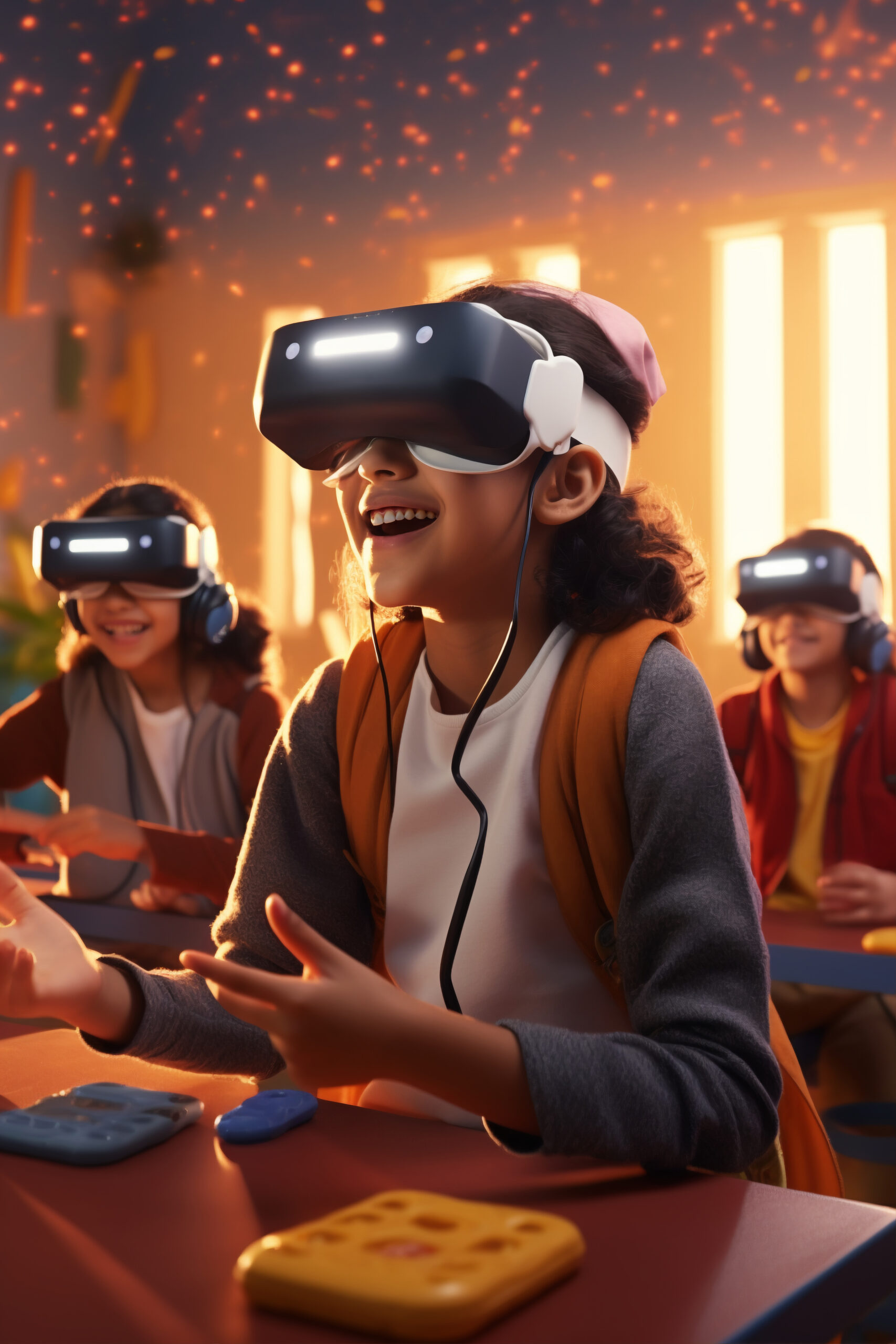Introduction
Virtual reality (VR) is an emerging revolutionary technology that has the power to fundamentally change the way that education is provided. It creates an immersive, engaging learning environment that gets children motivated to learn.
The use of virtual reality in the classroom can completely transform both the way teachers teach and students learn. This impressive technology has the potential to create engaging and interactive learning experiences, breaking down traditional barriers and expanding educational horizons.
Typically involving wearing a head-mounted display that tracks the user’s movements, it creates a sense of being physically present in a virtual world. It breaks free from the limitations of the traditional classroom by immersing students in a realistic, three-dimensional environment and offers incredibly successful, interactive, and transformative learning experiences.
As VR technology advances and becomes more affordable, its adoption in education will likely grow. So let us discuss some facets of VR in classrooms.
Types of Virtual Reality in the Classroom
VR can be integrated within a classroom in many ways. The exact method depends on the educational goals, subject matter, and available resources. Let us look at some of the types:
Virtual Field Trips: Through VR, students can virtually visit historical sites, museums, natural wonders, and cultural landmarks. This is especially useful when it is not economically feasible to reach these places. It gives a sense of wonderment and adventure, while being in the safe zone of their classrooms.
Immersive Classrooms: In this case, images are projected onto the walls, creating a virtual space where students can be transported to different places or scenarios without headsets. It is an even less costly affair, but promotes interaction and a shared experience among the students.
Simulations and Experiments: This is particularly useful to pre-train or give hands-on practice, before conducting experiments that are too costly, dangerous, or impractical to conduct in a traditional classroom setting. For example, students can interact and explore the organs of the human body in a Biology class.
Augmented Reality (AR) Integration: To augment reality means to overlay digital elements onto physical objects and scenes. This way, students can interact with layers of information created by a blend of real locations and virtual units.
Collaborative VR: As the name suggests, this involves working together in a pseudo-real or virtual world on a project. It can break the limitations of large physical barriers and foster a spirit of communication and teamwork.
Advantages of Virtual Reality in Education
Enhanced Engagement and Attention: VR transports students to a fantastical realm, where they can interact and experiment with digital elements. This removes distractions of the real world, excites them and engages them in the process of learning.
Experiential and Multisensory Learning: Through VR, students can experience simulations and scenarios that are otherwise challenging or impossible to recreate in a traditional classroom setting. By using interactive elements VR allows hands-on, multisensory learning experiences that deepen understanding and retention.
Personalized and Adaptive Learning: VR can be modified as per the audience and the project. It can provide real-time feedback, adapt content difficulty, and offer personalized guidance, ensuring that each student receives targeted support and challenges.
Global and Cultural Awareness: By bridging the gap between far away localities, VR helps broaden the mind of the students. It helps them gain an appreciation for the ways of living of other cultures and fosters empathy and understanding.
Inclusive Education: VR offers the possibility to accommodate the needs of special children. For instance, a student with a visual impairment can explore a virtual art gallery through audio descriptions and tactile feedback. This ensures that no student is left behind and can be given supportive assistance.
Conclusion
Virtual reality (VR) and augmented reality (AR) are revolutionizing education by providing immersive, experiential, and personalized learning experiences. Studies have shown that VR is one of the best ways to prompt learning and to stimulate interest.
The fusion of VR headsets will likely redefine the future of education. These technologies have the potential to create immersive, personalized and globally connected learning environments.
The integration of VR represents a paradigm shift in education, paving the way for a more engaging, inclusive, and personalized learning experience that better prepares the student for the complexities of the modern world.
